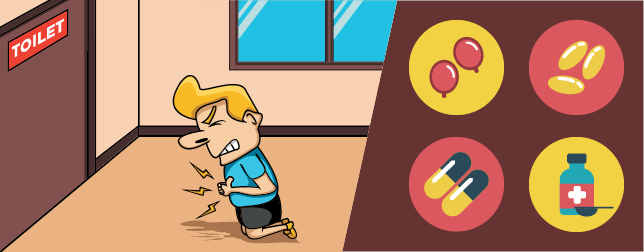Constipation refers to bowel movements that are infrequent or hard to pass. Constipation has many causes such as slow movement of stool within the colon, irritable bowel syndrome, and pelvic floor disorders. Did you know that the rate of constipation among the population is between 2 and 30%? And that among the elderly living in a care home is between 50-75%? That translated into the amount of money that people spend on treatments is, well, a lot of money per year.
Treatment of constipation depends on the underlying cause and the duration that it has been present. Measures that may help include drinking enough fluids, eating more fiber (kiwis are a good source of fiber), and exercise. If this is not effective there are other methods such as laxatives. If this last one doesn’t convince you there are new technologies on the market that can help your GI tract move with a non-invasive solution.
Mowoot is a non-invasive wearable product for chronic constipation. With the aim of emulating massage techniques used by professional therapists, the device has a belt that automatically massages the abdominal region, specifically the ascending and descending colon. The company warns that for the massage to be effective it must be administered daily for 10 to 20 minutes.
DFree is another drug-free wearable device to help people get to the bathroom before it’s too late. The device fits on your underwear and tracks your bowel movements. This device predicts fecal excretion. The device goes on your stomach and uses ultrasonic waves to monitor your internal organs and sends the data to smartphones to be displayed.
Vibrant capsule provides chemical-free and safe treatment for patients suffering from constipation. The capsule’s vibration inside the GI tract mechanically induces peristalsis, thus aiding in treating constipated patients without side effects. Constipation relief is achieved by the capsule’s vibrations on the large intestinal wall, consequently inducing natural peristaltic activity, generating additional spontaneous bowel movements.The capsule is activated by a base unit that transfers the data to the capsule which operates inside the large intestine and is washed out of the body with the bowel movement.
Takeda Pharmaceuticals announced the launch of a pilot digital technology program to support patients and physicians with the management of inflammatory bowel disease (IBD). This program, iBData, is designed to intersect healthcare and digital technologies. In partnership with Texas Digestive Disease Consultants (TDDC) and Vanderbilt University Medical Center (VUMC), this pilot program will allow patients with IBD to track their symptoms and lifestyle factors with wearable watch technology. The data will be collected and translated into reports intended to help enhance patient-physician interaction with the goal of improved care. Talking about IBD and this pilot project will be Jonathan Israel Senior Product Manager IBD Marketing and Elizabeth Quist, Director Specialty Market Access at Takeda Pharmaceuticals at the upcoming WT | Wearable Technologies Conference 2017 USA.
G-Tech Medical is developing a wireless, wearable disposable electrode patch to measure the electrical activity from the stomach, small intestine and colon. The patches will be thin, conforming, waterproof and comfortable, to enable patients to go about their daily life unhindered. Data from the patches will be transmitted through BLE to a smartphone for collection and further transmission to a cloud database available to the physician. The physician will analyze the data in an application provided by G-Tech that embodies expert knowledge of the signals, and the patterns they form for early and accurate diagnosis of functional gastrointestinal disorders.
Some of these solutions are still pilot treatments or in a very early stage, however, people have been suffering from digestive disorders since ancient times. The solutions that were out in the market until now were “aggressive” and invasive to the GI tract but finally, we are seeing some drug-free devices that can be easily integrated into people’s daily lives.












